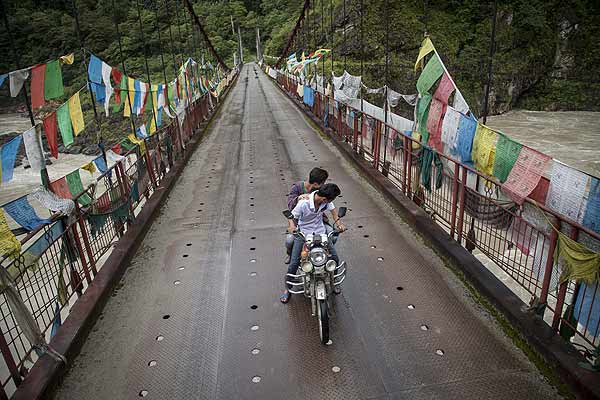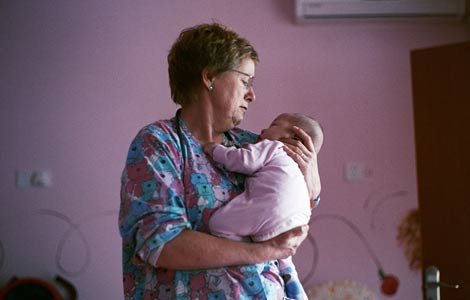Branding history
Updated: 2013-08-10 08:34
By Pauline D. Loh (China Daily)
|
||||||||
|
The Raffles Hotel in Singapore is a national monument. Provided to China Daily |
These are the hotels of royalty and aristocracy, of the political elite and the literary adventuresome. They sell nostalgia and history and recreate a piece of the past garnished with thoroughly modern luxuries. Pauline D. Loh visits the Raffles Hotels in Singapore and Beijing.
The limousine sweeps up the gravel drive past the traveler's palms and glides to a stop. A very tall turbaned Sikh opens the car door and smiles a welcome.
The Sikh doormen have been icons of the Raffles in Singapore since the days of the Sarkies brothers, the original hoteliers. Only now, they are carefully selected to reflect the changing of times.
They have photographic memories that remember faces and names of all the important guests of the day and they can greet then in several languages. Their pure white uniforms with braids and epaulets are the envy of all little boys, and some big ones, too.
That is how tradition and legacy have been updated for the 21st century.
The Raffles Hotel in Singapore is a national monument and although it is now operated by an international chain, every Singaporean still takes great pride in this homegrown temple of hospitality. Together with the famous girls of SIA, the Night Safari and the street food, it is part of the uniquely Singaporean experience.
A 30-month thorough refurbishment in 1989 brought the grand dame back into action by 1991, and the flow of celebrity guests through its doors have not stopped since.
Presidents and queens, princes, consorts and heads of state have all chosen to rest their heads, and their feet at the Raffles, and no wonder.
The suites-only hotel is so exclusive that there is discreet but strict security in the lobby and the two floors of guest rooms are carefully guarded for privacy. Long corridors lead to well-appointed suites reminiscent of the novels of Somerset Maugham, who, by the way also stayed here.
As did Joseph Conrad, Rudyard Kipling and Ernest Hemingway
On a recent visit, we were shown around the "royal" Sarkies and Stamford Raffles Suites, both of which command a whopping floor area of more than 250 sq meter each. The doorways are about 17 feet (5 meters) high and the tropical hard wood doors are, of course, custom made.
Brocades and Egyptian cottons, silk carpets and tapestries are all part of the dcor, aptly palatial and fitting for the Queen of England. She stayed here on her state visit to Singapore, as did her son the Duke of Cambridge and his wife, Katherine the Duchess.
Staying at the Raffles is an experience of a more gracious age - of morning tea on the balcony listening to the mynahs sing, tiffin at lunch and a Singapore Sling before dinner at the Palm Court.
It is beyond just buying a bed for the night, and many travelers are willing to pay a high premium for the experience. It's something you can write home about, and in the modern context, proudly tweet or post on Facebook and weibo.
Similarly at the Raffles Beijing, a prestigious address on Chang'an Avenue next to Tian'anmen adds to the romance of selling legacy and history. It was originally an annex of the Forbidden City's first hotel, the Beijing Hotel, which still retains the main building right next door.
A sweeping staircase and a chandelier overhead create the mood upon entry, but it is the hard wood dance floor right by its French restaurant Jaan that tells the most interesting stories.
According to the nostalgia spin-doctors, this was the place where Kuomintang generals, their wives and mistresses partied in the first days of the Republic of China. In more sober times later on, heads of states such as Indonesian president Sukarno and his elegant wife Dewi Sukarno enjoyed tea and elite company here.
On the walls of the restaurant are sepia-tinted photos of political luminaries that had passed and paused. Once again, it is the Raffles brand at work, that formula of selling the romance of the past.
It is a branding that has lasted 150 years, right from source in Singapore, where it all started, to Dubai, Seychelles, Cambodia, Paris, Beijing, Hainan, Makati and Makkah, where there are Raffles Hotels carrying on the traditions and unique selling points of glamour and adventure inextricably linked and reminiscent of a more leisurely, civilized past.
The Raffles Hotels are now part of a conglomerate of three brands - Fairmont, Raffles and Swissotel. Where the Fairmont and Swissotels have been largely offering convenient city-hop accommodations, the Raffles stands clearly apart in this grouping.
"Our three brands also maintain their identities and traditions: Fairmont as a landmark presence integrated into its community; Raffles as sophisticated luxury with residential charm; and Swissotel as personalized efficient service within a contemporary ambiance," this is according to the release from the group.
We also sought clarification from Diana Banks, vice-president of sales and marketing of Raffles Hotels & Resorts, based in Singapore.
"Raffles Hotels and Resorts remains exactly the same. We have always been part of the FRHI family, which in effect is three brands: Raffles, Fairmont and Swissotel.
"That does not change. The only change has been on an organizational change, where we are being more effective by creating a regional structure to better serve our customers and hotels. The hotels and brands stay distinctly different."
Recently, FRHI received a massive investment injection from Qatar, reputed from a royal connection, which if you come to think of it, suits the branding to a tee.
The next Raffles to open in China will be on Hainan island, in Lingshui town, Yingzhou Li autonomous county. The hotel is currently accepting reservation for Sept 1 onwards.
Contact the writers at paulined@chinadaily.com.cn.

 'Despicable' minions upset Depp's 'Lone Ranger' at box office
'Despicable' minions upset Depp's 'Lone Ranger' at box office
 'Taken 2' grabs movie box office crown
'Taken 2' grabs movie box office crown
 Rihanna's 'Diamonds' tops UK pop chart
Rihanna's 'Diamonds' tops UK pop chart
 Fans get look at vintage Rolling Stones
Fans get look at vintage Rolling Stones
 Celebrities attend Power of Women event
Celebrities attend Power of Women event
 Ang Lee breaks 'every rule' to make unlikely new Life of Pi film
Ang Lee breaks 'every rule' to make unlikely new Life of Pi film
 Rihanna almost thrown out of nightclub
Rihanna almost thrown out of nightclub
 'Dark Knight' wins weekend box office
'Dark Knight' wins weekend box office
Most Viewed
Editor's Picks

|

|

|

|

|

|
Today's Top News
3 Chinese citizens killed, 2 missing in Afghanistan
Time's ripe to invest in US
China's inflation rises 2.7% in July
Mandela manages to sit up
Industrial growth gaining momentum
Arctic trade route opens
New loans, social financing fall again
Trade disputes hit solar export prices
US Weekly

|

|





